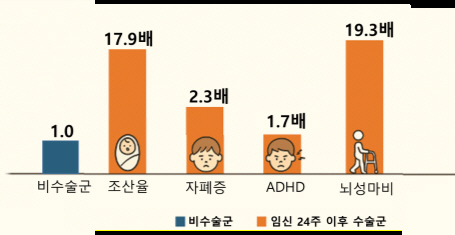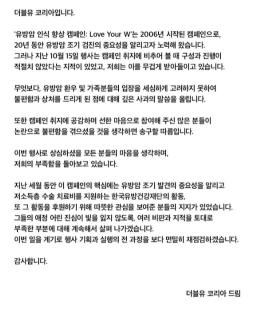The risk may be greater than the effect of cervical sutures at the wrong time, preterm birth prevention...18x increase in preterm birth rate during surgery after 24 weeks of pregnancy
May 14, 2025
|
The Patient-Centered Medical Technology Optimization Research Project Group of the Korea Institute of Health and Medical Sciences (PACEN) published the results of the clinical valuation based on the study of 'Development of a High-Risk Mother Management Model through Clinical Characteristics and Perinatal Prognosis Analysis of High-Risk Mothers in Korea'.
According to the globally recognized indications, for primigravida with no history of miscarriage, premature birth, or stillbirth, cervical suture is performed only when the amnion is visible during obstetric examination, and the guidelines recommend surgery at 16-24 weeks of pregnancy. Therefore, if the neck length is short in the first pregnancy, it is not an indication for cervical encapsulation after 24 weeks of pregnancy when the fetus can survive during childbirth.
However, it is pointed out that there are cases of surgery outside of the indication as misinformation spreads, centering on the online community, that `cervical suture can unconditionally prevent premature birth without side effects.'
According to a study by Oh Soo-young, a professor at Samsung Medical Center, the premature birth rate of primigravida (2,896,271) who underwent cervical encapsulation surgery increased 17.9 times compared to non-surgical groups, and the risk of autism, attention deficit hyperactivity disorder, and cerebral palsy increased 2.3 times, 1.7 times, and 19.3 times, respectively. However, even in the case of a primigravida operating before 16 weeks of pregnancy, the rate of preterm birth increased 3.2 times compared to the non-surgical group, which is a cervical encapsulation indication, 'no history of miscarriage, preterm birth, or stillbirth.
Experts who attended the clinical valuation meeting pointed out that cervical sutures beyond indications can be linked to increased preterm birth rates and worsening prognosis, stressing the need to provide accurate information and prepare institutional arrangements to refrain from cervical sutures beyond indications recommended by the society.
This article was translated by Naver AI translator.














